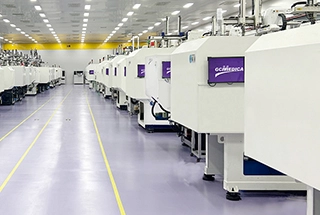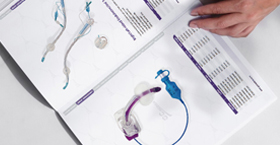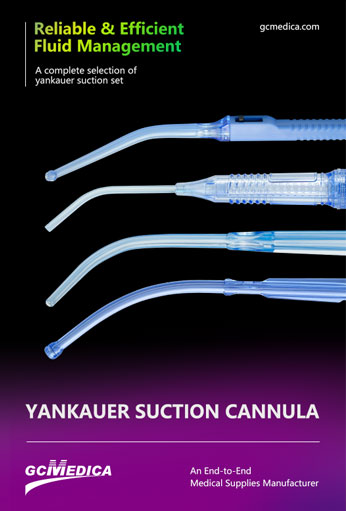A paediatric Yankauer is a scaled-down version of the standard rigid oral/surgical suction tip designed specifically for infants and children. Compared with adult Yankauers, the paediatric models have a shorter overall length, a narrower and often more rounded tip profile, and a slimmer handle to allow more precise control in small mouths and airways. The goal of the paediatric design is to provide effective suction while reducing the risk of mucosal trauma and allowing the clinician to work comfortably and accurately in confined spaces.
Typical dimensions and why they matter
The single most consistent dimension used to describe paediatric Yankauers is the overall length: many paediatric models are approximately 8.25 inches (about 210–216 mm) long, whereas adult instruments commonly measure 10–12 inches or more. Tip geometry is also important: paediatric tips are commonly described as “small” or “delicate,” with tip widths often in the single-digit millimetre range (for example, near 8 mm), although exact values vary by manufacturer. A smaller tip reduces the contact area and lowers the chance of tissue suction and injury, while a reduced bulb volume keeps suction force focused and controllable.
Handle and connector considerations
Paediatric Yankauers typically feature a narrower handle profile so clinicians can maintain a fine grip and precise movement. Many models retain standard connectors (barbed or universal fittings) so they mate with the facility’s suction tubing and canister system; however, regional or system differences exist, so confirming the exact connector type (for instance, compatibility with 22 mm corrugated tubing or other standards) is recommended before purchase.
Materials and disposability
Paediatric Yankauers are available as reusable stainless-steel instruments or as molded disposable units made from polypropylene or similar materials. Reusable stainless units must tolerate the facility’s sterilization procedures, whereas disposables offer sterile, single-use convenience and eliminate reprocessing work. Choice depends on infection control policy, cost, and environmental considerations.
| Feature | Typical pediatric Yankauer measurement / description | Clinical reason |
|---|---|---|
| Overall length | ≈ 8.25 in (210–216 mm) | Shorter length improves control in small mouths/airways |
| Tip pattern / width | Small/delicate; tip width often ~8 mm (varies) | Reduces tissue trauma; allows precise suctioning |
| Handle | Narrow, pediatric-sized | Easier fine manipulation and ergonomics for small patients |
| Connector | Barbed or universal to fit standard tubing (confirm compatibility) | Ensures compatibility with in-room suction systems |
| Material | Reusable stainless steel or disposable molded plastics | Tradeoff: reprocessing vs. single-use convenience |
Practical guidance for procurement and clinical use
Treat “paediatric” as a category rather than a single standardized size: actual lengths and tip dimensions vary by maker. If exact fit matters, request product datasheets with millimetre dimensions.
Confirm tubing connector compatibility with your facility’s suction canister and tubing. Mismatched connectors cause leaks or require adapters.
Choose reusable or disposable based on infection-control policy, sterilization capability, and budget. For reusable models, verify that the device can withstand the facility’s validated sterilization cycle.
Train staff on gentle suction technique for paediatric patients and inspect instruments before use to ensure smooth tip edges and intact connectors.
A paediatric Yankauer is a reduced-size suction tip optimized for children: typically around 8.25 inches (210–216 mm) long with a small/delicate tip and a narrow handle for precise control. Because manufacturers'dimensions vary, verify the exact overall length, tip width, and connector type against your clinical needs and suction system before purchasing. Choosing between reusable and disposable versions should reflect your facility’s sterilization practices, infection control policy, and cost considerations.
| Yankauer Suction Handle> |

 Français
Français Español
Español Products
Products
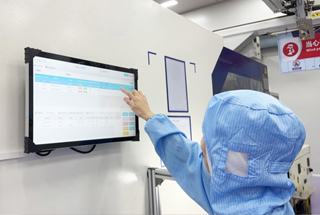
 About Us
About Us




